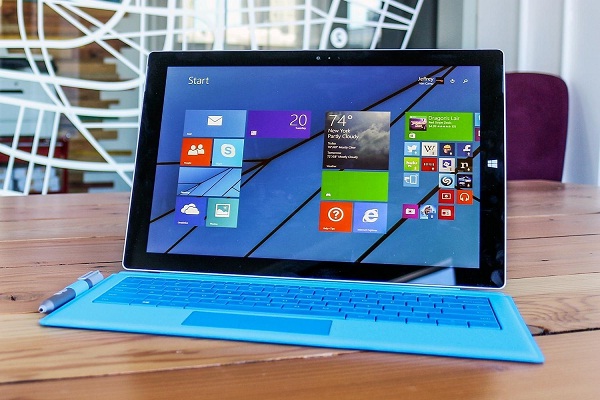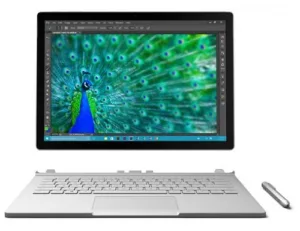Away from smartphones, Microsoft showed off the fourth-generation of its Surface tablet: the Surface Pro 4. The screen size has been increased from the Pro 3, and internal specifications have also been upgraded.
 An extra 0.3″ have been added to the 12″ screen on the Surface Pro 3, and resolution has jumped from 2160 x 1440 to 2736 x 1824. Microsoft’s Pixelsense display technology (a form of IR touch) is used to detect the Surface Pen and other objects; the display can detect 1,024 points of pressure from the Pen.
An extra 0.3″ have been added to the 12″ screen on the Surface Pro 3, and resolution has jumped from 2160 x 1440 to 2736 x 1824. Microsoft’s Pixelsense display technology (a form of IR touch) is used to detect the Surface Pen and other objects; the display can detect 1,024 points of pressure from the Pen.
As a Surface Pro product, productivity is key; the tablet has a kickstand, Touch Cover keyboard and Intel Skylake processors (either Core m3, i5 or i7). The battery will last up to nine hours, and – naturally – the device runs Windows 10. The tablet also has a 5MP front camera that can be used to sign in with Windows Hello.
4GB, 8GB or 16GB of RAM are installed, with a 128GB – 1TB SSD. The device is 8.5mm thick and weighs 0.7kg. Mini-DisplayPort and USB 3.0 ports are featured. It can be pre-ordered today for $900.
For the wrist, Microsoft introduced the second generation of the Microsoft Band. This features a curved OLED display and is still focused on health and fitness. The wearable features GPS; heart rate, steps, calories burned and sleep sensors; Cortana voice recognition; and notification display. A new feature is a barometer that tracks elevation. The Band will be launched on the 30th October, for $250.
Finally, Microsoft executives showed off a ‘mixed-reality’ game on the Hololens headset, code-named ‘Project X-Ray’. A development kit version of the Hololens will be available in Q1’16, for $3,000.
Analyst Comment
Like the original Surface tablet, the Surface Book seems likely to upset Microsoft’s existing hardware partners such as Dell, Asus and Acer.
IHS’ Ian Fogg makes a good point about the Lumia 950/950 XL smartphones. These models can use Microsoft’s Continuum feature to connect to a large screen and external mouse and keyboard, turning them into a ‘mini PC’. However, the phones use ARM architecture, so the kinds of PC applications they can run “are very similar to the failed Windows RT devices”.
The new phones are an evolution, not a revolution. While some of the features are interesting, there are none here that would make a consumer choose the new Lumias over an Android handset, or an iPhone. Fogg describes them as “a smartphone rearguard action”, adding, “They enable Microsoft to maintain a presence in the smartphone market while Microsoft’s research and development teams search for a way to re-invent the smartphone”. (TA)

